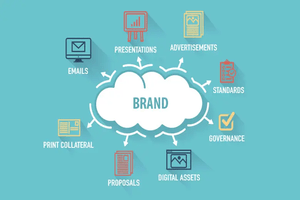In today’s competitive business landscape, understanding your customers is key to success. Customer segmentation is a powerful strategy that allows businesses to divide their customer base into distinct groups based on shared characteristics. This segmentation enables personalized marketing efforts that resonate with each group, ultimately boosting customer satisfaction and business growth. To help you make informed decisions, we’ve compiled a list of the top 10 customer segmentation tools for your business.
1. Google Analytics:
– Overview: Google Analytics is a versatile, free tool that provides comprehensive insights into website traffic.
– Segmentation Features: It offers segmentation options based on demographics, behavior, and other factors.
– Benefits: Google Analytics allows you to understand your online audience and tailor your marketing efforts accordingly.

2. Segment:
– Overview: Segment is a cloud-based customer data platform that collects, unifies, and activates customer data.
– Segmentation Features: You can segment customers based on purchase history, website activity, and engagement with marketing campaigns.
– Benefits: Segment simplifies data management, making it easier to create targeted marketing campaigns.
3. Amplitude:
– Overview: Amplitude is a user behavior analytics platform that provides insights into how customers interact with products and services.
– Segmentation Features: It allows segmentation based on in-app behavior, content engagement, and conversion rates.
– Benefits: Amplitude helps you optimize your product offerings and improve user experiences.
4. Mixpanel:
– Overview: Mixpanel is another user behavior analytics platform known for its user-friendly interface.
– Segmentation Features: It offers a wide range of segmentation options for customer data analysis.
– Benefits: Mixpanel’s ease of use makes it accessible for businesses of all sizes.
5. Kissmetrics:
– Overview: Kissmetrics is a web and app analytics platform that tracks and analyzes customer behavior.
– Segmentation Features: It enables segmentation based on website activity, in-app behavior, and purchase history.
– Benefits: Kissmetrics helps you gain insights into customer journeys and engagement.
6. Heap:
– Overview: Heap is a low-code data platform that collects, analyzes, and visualizes customer data.
– Segmentation Features: It allows segmentation based on website activity, in-app behavior, and purchase history.
– Benefits: Heap streamlines data analysis, making it accessible for non-technical users.
7. Pendo:
– Overview: Pendo is a product adoption platform that focuses on understanding how customers use products.
– Segmentation Features: It enables segmentation based on product usage, content engagement, and conversion rates.
– Benefits: Pendo helps you improve product adoption and customer satisfaction.
8. Qualtrics Customer Experience:
– Overview: Qualtrics Customer Experience is a platform for collecting, analyzing, and acting on customer feedback.
– Segmentation Features: It allows segmentation based on satisfaction levels, repurchase likelihood, and willingness to recommend.
– Benefits: Qualtrics helps you gather insights to enhance customer experiences.
9. Totango:
– Overview: Totango is a customer success platform that enhances customer retention and growth.
– Segmentation Features: It enables segmentation based on engagement with customer support, churn risk, and customer lifetime value.
– Benefits: Totango aids in retaining valuable customers and driving business growth.
10. Insightly:
– Overview: Insightly is a CRM platform that helps manage customer relationships.
– Segmentation Features: It offers segmentation based on contact information, purchase history, and engagement with marketing campaigns.
– Benefits: Insightly helps streamline customer relationship management.
When selecting a customer segmentation tool, consider factors such as the size and complexity of your customer base, the data you wish to collect and analyze, the required features, and your budget. Once you’ve chosen the right tool, follow these additional tips for effective customer segmentation:

– Set Clear Goals: Define what you aim to achieve with customer segmentation.
– Utilize Multiple Data Sources: Combine various data sources for a comprehensive customer picture.
– Test and Iterate: Experiment with different segmentation strategies to find what works best.
– Personalize Marketing Messages: Craft personalized messages to connect with customers on a deeper level.
By implementing these strategies and utilizing one of these top customer segmentation tools, you can enhance your marketing efforts, improve customer satisfaction, and drive business growth in today’s competitive market.










 by
by